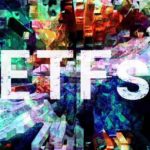 Today, we look at two Canadian ETFs that hold many of the Canadian stocks we recommend for 2019. iShares S&P/TSX 60 Index ETF and iShares Canada Select Dividend Index ETF mirror, respectively, sub-indexes holding the 60 most-heavily trades stocks and 30 of the highest-yielding dividend stocks on the Toronto exchange. Each of the Canadian ETFs represents a low-fee way of holding many of the country’s best stocks
Today, we look at two Canadian ETFs that hold many of the Canadian stocks we recommend for 2019. iShares S&P/TSX 60 Index ETF and iShares Canada Select Dividend Index ETF mirror, respectively, sub-indexes holding the 60 most-heavily trades stocks and 30 of the highest-yielding dividend stocks on the Toronto exchange. Each of the Canadian ETFs represents a low-fee way of holding many of the country’s best stocks
Exchange traded funds (ETFs) are set up to mirror the performance of a stock market index or subindex. They hold a more or less fixed selection of securities that represent the holdings that go into calculating the index or sub-index.
ETFs, including Canadian ETFs, trade on stock exchanges, just like stocks. That’s different from mutual funds, which you can only buy at the end of the day at a price that reflects the fund’s value at the close of trading.
Prices of Canadian ETFs are quoted in newspaper stock tables and online. You pay brokerage commissions to buy and sell them, but their low management fees give them a cost advantage over most mutual funds.
As well, shares are only added or removed when the underlying index changes. As a result of this low turnover, you won’t incur the regular capital gains taxes generated by the yearly distributions most conventional mutual funds pay out to unit holders.
Note that the best Canadian ETFs generally practice “passive” fund management, in contrast to the “active” management that conventional mutual funds provide at much higher costs. Traditionally, Canadian ETFs stick with this passive management: they follow the lead of the sponsor of the index (for example, Standard & Poors). Sponsors of stock indexes do from time to time change the stocks that make up the index, but generally only when the market weighting of stocks change. They don’t attempt to pick and choose which stocks they think have the best prospects.
This traditional, passive style also keeps turnover very low, and that in turn keeps trading costs for your ETF investment down.
In contrast, there are a lot of Canadian ETFs that have been created to tap into popular, but risky, themes and fads. So, you need to be very selective with your ETF holdings.
Theme investing has a natural appeal. It simplifies things. Investors like it because they feel it can put their investment returns into overdrive. Some also feel it adds fringe benefits to their investing, by letting them support social or environmental objectives. Brokers also like it because it gives them a rationale to recommend a variety of stocks.
When you focus on theme investing, however, it’s easy to overlook the fundamentals.
Below we update our advice on two Canadian ETFs — both of which we like — and both of which follow the traditional, passive style we recommend.
HARES S&P/TSX 60 INDEX ETF $24.99 (Toronto symbol XIU; buy or sell through brokers; ca.ishares.com) is a good low-fee way to buy the top companies listed on the TSX. Specifically, the fund’s holdings represent the S&P/TSX 60 Index. It focuses on the 60 largest, most heavily traded stocks on the exchange.
The ETF began trading on September 28, 1999. Its MER is just 0.18%; it yields 2.9%.
The S&P/TSX 60 Index mostly consists of high-quality companies. However, it must ensure that all sectors are represented, so it holds a few companies we would not include.
The fund’s top holdings are Royal Bank, 8.3%; TD Bank, 7.8%; Enbridge, 5.3%; Bank of Nova Scotia, 4.9%; CN Rail, 4.9%; Suncor Energy, 3.6%; Bank of Montreal, 3.5%; TC Energy (formerly TransCanada Corp.), 3.3%; Brookfield Asset Management, 3.1%; and BCE, 3.0%.
iShares S&P/TSX 60 Index ETF is a buy.
ISHARES CANADIAN SELECT DIVIDEND INDEX ETF $24.97 (Toronto symbol XDV; buy or sell through brokers; ca.ishares.com) holds 30 of the highest-yield Canadian stocks. The ETF also considers dividend growth and payout ratios to make its selections. The weight of any one stock holding is limited to 10% of the fund’s assets. Its MER is 0.55%, and the ETF, which began trading on September 28, 1999, yields a high 4.5%.
Most market indexes are set up so that the stocks in the index are those with the highest market capitalization and are also the most widely traded. However, the iShares Canadian Select Dividend Index ETF focuses on the 30 stocks that it sees as having the highest dividend yields; it also considers their prospects for dividend growth and sustainability. That means this ETF is more actively managed than, say, the iShares S&P/TSX 60 Index ETF. As a result, its MER is higher.
The fund’s top holdings are CIBC, 8.0%; Royal Bank, 6.5%; Bank of Montreal, 6.0%; Bank of Nova Scotia, 5.4%; BCE, 5.1%; TC Energy, 5.1%; TD Bank, 4.8%; Laurentian Bank, 4.6%; Emera, 4.2%, National Bank, 4.1%; and IGM Financial, 3.9%.
iShares Canadian Select Dividend is a buy.
For a recent article on two foreign ETFs that can benefit Canadians, read Two international ETFs offer timely diversification for Canadian investors.
Do you think ETFs are a better investment than mutual funds?
 Pat McKeough has been one of Canada’s most respected investment advisors for over three decades. He is the founder and senior editor of TSI Network and the founder of Successful Investor Wealth Management. He is also the author of several acclaimed investment books. This article was published on July 15, 2019 and is republished on the Hub with permission. This article was originally published in 2016 and is regularly updated.
Pat McKeough has been one of Canada’s most respected investment advisors for over three decades. He is the founder and senior editor of TSI Network and the founder of Successful Investor Wealth Management. He is also the author of several acclaimed investment books. This article was published on July 15, 2019 and is republished on the Hub with permission. This article was originally published in 2016 and is regularly updated.


